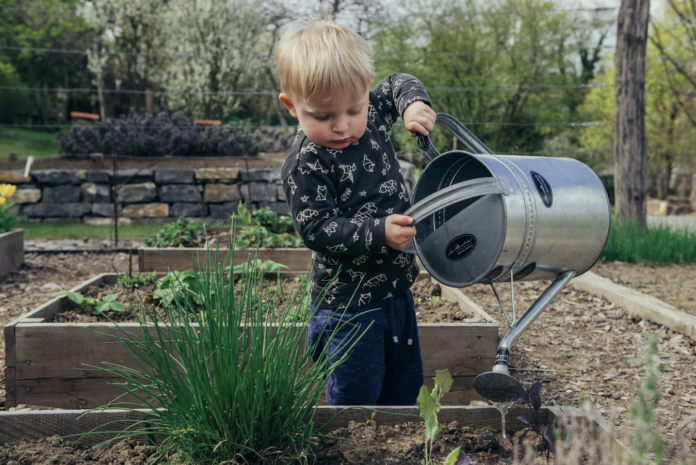
Have you been thinking of growing your garden but you haven’t found the time to do so? We get it, and you’re a busy office worker, a mother, or a housewife. You don’t have the time to look after plants. But not all plants are high maintenance. This article only included low-maintenance plants to cater to a simple life.
When you grow your food, your diet is now more diverse and healthier. Vegetables have numerous minerals, antioxidants, and vitamins that are nothing but beneficial to your overall health. Always being on the go can be challenging since you have to manage everything at once, but with these five easy-to-grow plants, you can be the best of both worlds. Read down below to learn more about planting the plants and living healthy:
-
- Peas (Pisum sativum)
Peas are famous for their pods that contain numerous peas, depending on the variety. The peas can be colored yellow or green. Although peas are technically a fruit, it’s often used as a vegetable, and you can add it to Asian cuisine. Adding peas to your diet can lower some chronic conditions like arthritis, heart diseases, and diabetes. It’s a good source of antioxidants, zinc, and vitamins A, B, C, and E.
When adding these to your garden, it has to be under the full sun and in the soil where it drains well. Since it is a fruit, it requires less fertilizer than other vegetables. Instead, add a small amount of compost to the peas’ soil before planting it.
Interestingly, Gregor Mendel, the Father of Genetics, used peas to discover the fundamental laws of inheritance; this shaped the fundamental discovery in Genetics. He chose peas because peas were true-breeding; they had various traits, colors, and shapes. Lastly, he selected peas because it grows quickly and it doesn’t require a lot of space.
-
- Radishes (Raphanus sativus)
Radishes are root vegetables, and this means that it grows below the surface. It resembles turnips or beets in texture and appearance, but they have a different flavor. Rashies are white with a mild flavor as compared to a small red radish.
Raphanus sativus can grow up to three feet in height and weigh 100 pounds, but they are immediately harvested when they get to one to five pounds. When taking care of the plant, give them enough space. Cover them during midsummer; if you want to know what types of radishes you wish to plant and how you can grow them, go to GardenersPath.com to learn more. It includes information on getting the best results with your vegetable and what problems to look out for.
Radishes are rich in calcium and potassium. If you don’t know, calcium is essential in maintaining strong bones. Lastly, potassium is one of the most vital minerals for the body. It aids in regulating nerve signals, reduces blood pressure, and many more. You can get all of these by eating radishes!
-
- Spinach (Spinacia oleracea)
Spinaches are simple, and their leaves are triangular shaped in a way; they can be puckered, flat, or ovate. The spinach plant can produce small dry fruits. When placing this vegetable in your house, ensure that you put it somewhere cool and have well-timed rich soil. It will require all of these since the vegetables grow fast and wide.
Adding spinach to a meal can improve overall health. You can saute it, bake it, or if you’re on a juice cleanse, you can turn it into liquid. This vegetable is so healthy, and even kids can eat them!
-
- Potatoes (Solanum tuberosum)
It is an edible tuber crop. The skins can be purple, violent, or brown, and you can eat its hearty skin. There are over 200 varieties of these tasty vegetables. When taking care of a potato plant, ensure that the soil isn’t compact with the potatoes. Protect the tubers from the hot rays of the sun by hilling up the ground over it.
You cannot go wrong with potatoes, and every age loves this plant; it’s on every menu. You can fry it and call it fries, make it into mashed potatoes, hash browns, baked potato, tater tots, and many more!
-
- Onion (Allium cepa)
Onions have red or brown skin and a mild flavor. You can add its green leaves, stem, top, and bulb to your meal. You can use onions as a garnish or add them to salads, sauce, seasoning, caramelized onions in burgers, and many more!
Additionally, onions were used by ancient people ever since the bronze age. Have you ever wondered why you cry every time you chop onions? It’s because of the syn-Propanethial-S-oxide in onions. It stimulates the lacrimal glands in our eyes and then releases tears.
Takeaway
Contribute to the planet by taking care of the five plants mentioned above. Even if you’re busy, you can still take care of plants. You can add healthy food to the table, and you can enjoy the benefits of owning a vegetable garden. You’ll attract happiness, several vitamins, and beauty into your garden by investing in these plants.





